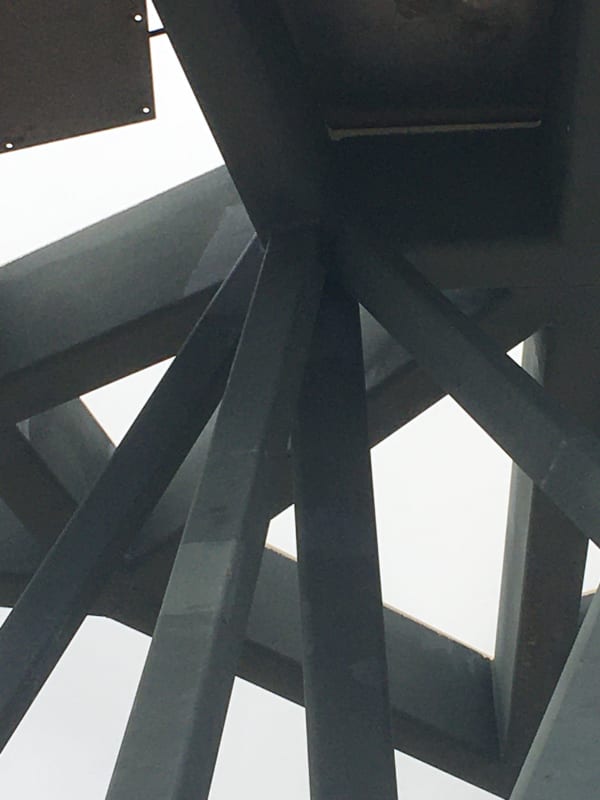MegaStructures
Structural
- Sep 26, 2019
- 376
Hello,
I am looking for a little guidance on how to analyze multi-planar connections for tubular connections (Rec. HSS). I understand that there is a little more that goes into weld design for a tube-tube connection than is given in Blodgett's elastic weld procedures, due to the flexibility of the tube face and there are also some additional failure modes in these connections, mostly again issues with local strength in the tube face.
AISC Ch. K gives some guidance on how to account for the uneven load distribution in a weld for in-plane HSS-HSS connections, but does not give any guidance on multi-planar connections. CIDECT, really is the committee responsible for most of the guidance in Ch. K and does offer some very limited guidance in their DG3, which basically amounts to "apply a reduction factor of 0.9 to a uni-planar connection for multi-planar joints". My structure is a space frame and the joints don't closely resemble a uni-planar HSS connection, thus I don't see that any of the force distribution modifiers apply to my joints. I am tempted to use Blodgett's weld design method with (conservative) 2D weld geometry and use this 0.9 reduction factor, without considering force redistribution.
Anyone have any experience designing these type of joints that might be able to offer a little guidance? I do work in an industry that requires load testing of the structure after construction that will be completed at a load greater than the load that will ever be on the structure in service that will help to verify results and I plan to do UT of select joints after test to prove soundness of welds.

“Any idiot can build a bridge that stands, but it takes an engineer to build a bridge that barely stands.”
I am looking for a little guidance on how to analyze multi-planar connections for tubular connections (Rec. HSS). I understand that there is a little more that goes into weld design for a tube-tube connection than is given in Blodgett's elastic weld procedures, due to the flexibility of the tube face and there are also some additional failure modes in these connections, mostly again issues with local strength in the tube face.
AISC Ch. K gives some guidance on how to account for the uneven load distribution in a weld for in-plane HSS-HSS connections, but does not give any guidance on multi-planar connections. CIDECT, really is the committee responsible for most of the guidance in Ch. K and does offer some very limited guidance in their DG3, which basically amounts to "apply a reduction factor of 0.9 to a uni-planar connection for multi-planar joints". My structure is a space frame and the joints don't closely resemble a uni-planar HSS connection, thus I don't see that any of the force distribution modifiers apply to my joints. I am tempted to use Blodgett's weld design method with (conservative) 2D weld geometry and use this 0.9 reduction factor, without considering force redistribution.
Anyone have any experience designing these type of joints that might be able to offer a little guidance? I do work in an industry that requires load testing of the structure after construction that will be completed at a load greater than the load that will ever be on the structure in service that will help to verify results and I plan to do UT of select joints after test to prove soundness of welds.

“Any idiot can build a bridge that stands, but it takes an engineer to build a bridge that barely stands.”

